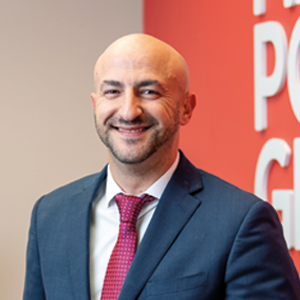
Mobile World Congress 2017 (Barcelona, 27 February – 2 March) was all about network operators and device manufacturers showing off 5G and what it is going to be used for. The next generation of mobile networks will not just be about speeding up the network for mobile consumer devices. A large driving force behind the development of 5G is the Internet of Things and all the devices that will need to be connected to the internet and to each other. Here are five things that 5G will bring to the future of mobile network connectivity
HIGHER SPEED/BANDWIDTH AVAILABLE
5G will provide wireless speeds as fast as and exceeding the speed of wired fibre connections, and will have the potential to to increase speeds 100-fold over the long-term without the need for a shift to an entirely new generation of ‘6G’ networks. 5G.co.uk discusses theoretical download speeds for 5G being able to reach 10 Gbps – 20 Gbps, while, based on 5G trials in labs and simulated real-life situations, initial speeds will be around 1-2 Gbps.
HIGHER NETWORK CAPACITY
The need for higher network capacity arises as more and more devices will make the shift to being connected. Intel’s ‘A Guide to the Internet of Things’ places IoT device numbers at 200 billion by 2020, breaking this down into the following categories:
- Business/Manufacturing (40.2%)
- Healthcare (30.3%)
- Retail (8.3%)
- Security (7.7%)
- Transportation (4.1%)
5G networks are expected to be designed to handle the immediate higher capacity requirements and to be able to accommodate future capacity requirements as the number of connected devices continues to rise.
LOWER LATENCY
Latency is defined as “the delay before a transfer of data begins following an instruction for its transfer”. The higher the latency, the more time it takes for a data transfer to begin and to get to where it needs to be. 5G networks will drastically lower latency to support new and unique uses of mobile network connectivity. 5G.co.uk reports the following latency estimates:
- 3G: 120 milliseconds
- 4G: 15-60 milliseconds
- 5G: 1 millisecond
Take autonomous vehicles as the example, there is little room for breaks in connectivity and delays in the transfer of information. Drones will be flying themselves around delivering packages and more, while self-driving cars will need to communicate with not only an online navigation system, but also with each other. In such cases a 5G network with lower latency will largely reduce the risk of error arising from delays in connectivity.
NETWORK SLICING
Network Slicing will be important in allowing one physical network to support the varied service needs of customers and devices. Operators will be able to customise factors such as bandwidth and latency on an as-a-service basis.
In a 5G System White Paper, Ericsson provided the following examples of use cases for future 5G networks:
- A more widely available mobile broadband experience at higher speeds to support more video
- Massive M2M communication for transportation monitoring and control
- Mass market personalised TV with big data analytics helping to shape the video experience
- Remote operation and critical machine-type communication, putting both bandwidth and latency demands on the network
HIGHER ENERGY EFFICIENCY
5G networks and data transmission are going to be less power and battery hungry, and more energy efficient. With the increased use of mobile devices and machines, and fixed devices in remote areas relying on battery power, higher energy efficiency will always be a key benefit. An Ericsson white paper on ‘5G Energy Performance’ discusses 5G systems having higher energy efficiency and performance through the design concepts of:
- Only being active and transmitting WHEN needed
- Only being active and transmitting WHERE needed
These come in comparison to the traditional ‘always on’ concept, which is less energy efficient.
The white paper also discusses how having a single physical network infrastructure that allows multiple different uses through network splicing will be more energy efficient than having multiple physical network infrastructures, each designed for a single specific usage group
WE PLACE TECHNOLOGY PROFESSIONALS GLOBALLY. ARE YOU LOOKING FOR YOUR NEXT ROLE?
We are ideally placed to support you wherever you want to work from our 11 offices and however you want to be involved in creating the future of 5G and mobile technology with our expertise in Telecoms, Cyber Security and Broadcast Media recruitment. We continue to work with some of the leading players in the 5G space, so contact us today to explore your next career move.
IF YOU HAVE A REQUIREMENT, WE HAVE THE SPECIALIST.
With our extensive and growing network of candidates ranging from engineers, to sales consultants and those prepared for management positions, First Point Group will always be able to connect you with the ideal person for your company and the role that needs to be filled. Why not get in touch to see how we can help you?



